[ad_1]
Hollyhocks are biennial or short-lived perennials with enormous, beautiful blossoms. Must you’ve grown them in your yard, you seemingly know what an prolonged and painstaking course of it might be to attend for them to bloom. This longer-than-average wait makes it way more distressing as soon as we see that pests are consuming our crops.
The first time I planted hollyhocks, I had no thought what to anticipate. I believed that they need to be fast growers on account of they’re reasonably large as soon as they flower. You can take into consideration my disappointment after I found that they wouldn’t bloom the least bit that first yr. It takes loads of endurance to develop them.
I would like that I’ll inform you that there aren’t many bugs which have a mode for hollyhocks. Sadly, as with many crops throughout the mallow family, they’re commonplace meals for lots of types of wildlife. Let’s focus on some pests it is potential you may encounter in your hollyhocks and the way one can deal with them with out missing out on these dazzling flowers.
Hollyhock Weevil
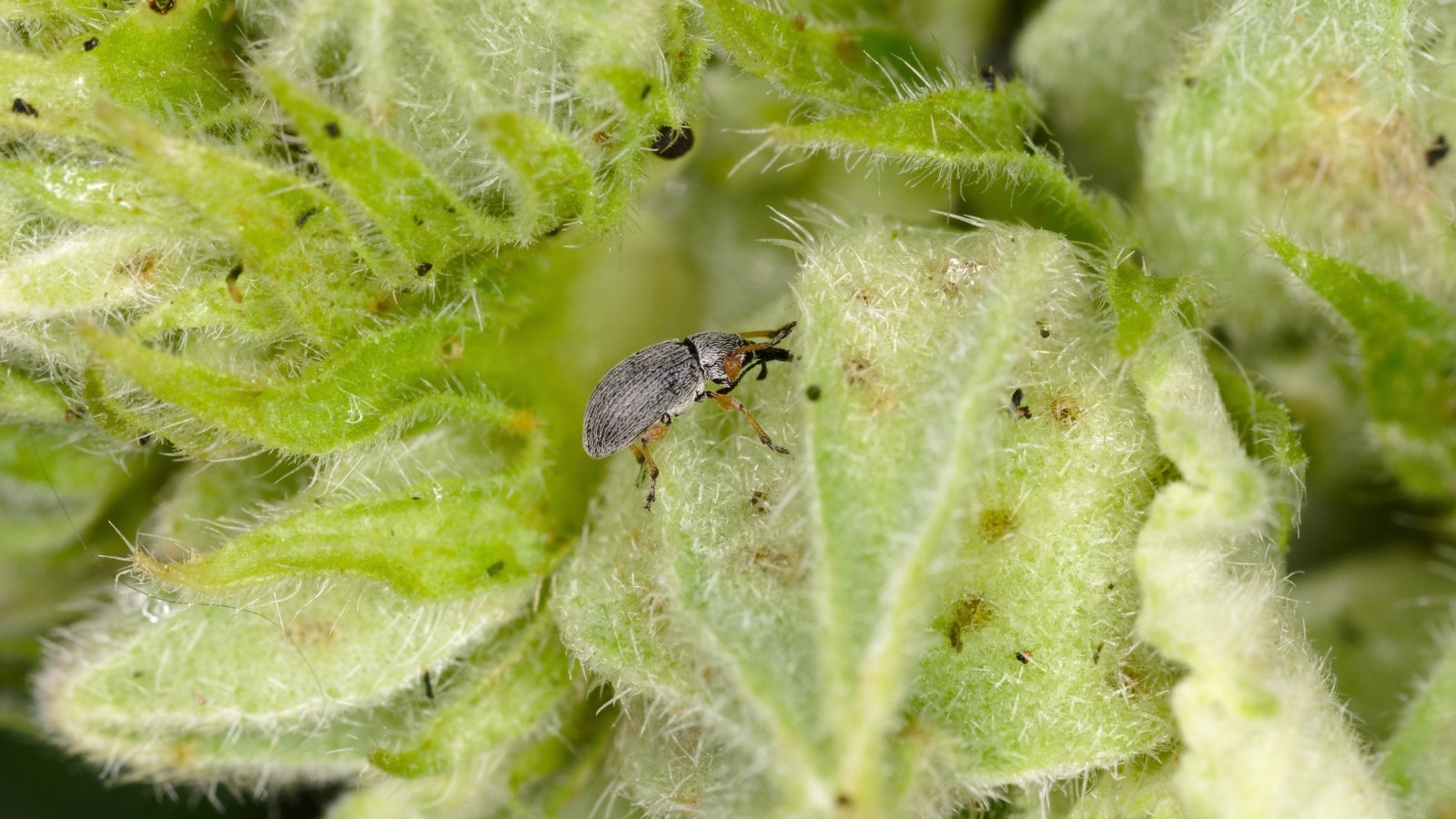

The hollyhock weevil is a night-feeding pest with a alternative for these pretty crops. They’re small, black beetles with orange or tan legs and an prolonged snout. The females are about 1/4″ prolonged (along with their snout) and the males are about half that measurement.
You’re most positively to see damage from weevils within the summertime months; they peak in June and July nevertheless can proceed to place eggs until September. They might munch on leaves first, leaving them with a lacy look.
When buds variety, females puncture them to place their eggs inside. About three days later, the eggs hatch and tiny white grubs get to work. They burrow into the seed pods and feed on forming seeds.
Weevils are energetic at night, so that’s the prime time for determining these pests. Preserve a sheet of paper beneath the affected part of the plant and shake. The bugs will flip into dislodged and fall off. It is also potential to find out them by the damage they set off to leaves and puncture marks on the underside of buds.
These weevils solely produce one period per yr. As quickly because the larvae pupate, the adults drop to the underside and overwinter beneath the soil. Weevils obtained’t set off damage to your flowers. Nonetheless, they’re going to shorten the lifetime of the plant and cease it from re-seeding.
Hollyhocks are short-lived perennials, so within the occasion that they don’t re-seed, you’ll should plant them every two years to take care of them throughout the yard. One of many easiest methods to forestall a model new period of weevils from cropping up subsequent yr is to remove the seed pods sooner than they mature. Immerse them in a bowl of soapy water to kill the grubs.
You can select the grownup weevils off by hand at night and drop them in a bowl of soapy water. This can be tedious, though, and must you miss some, you proceed to have a difficulty. Neem oil is environment friendly in the direction of weevils, and so is insecticidal cleansing cleaning soap.
Must you deal with to eradicate the larvae sooner than they demolish the seeds, you’ll allow your hollyhocks to re-seed. If not, it’s best to remove these seed heads and do away with them sooner than they mature. It would dramatically reduce the number of crops you’ll have subsequent yr, nevertheless it’ll moreover reduce the number of weevils to take care of.
Japanese Beetle
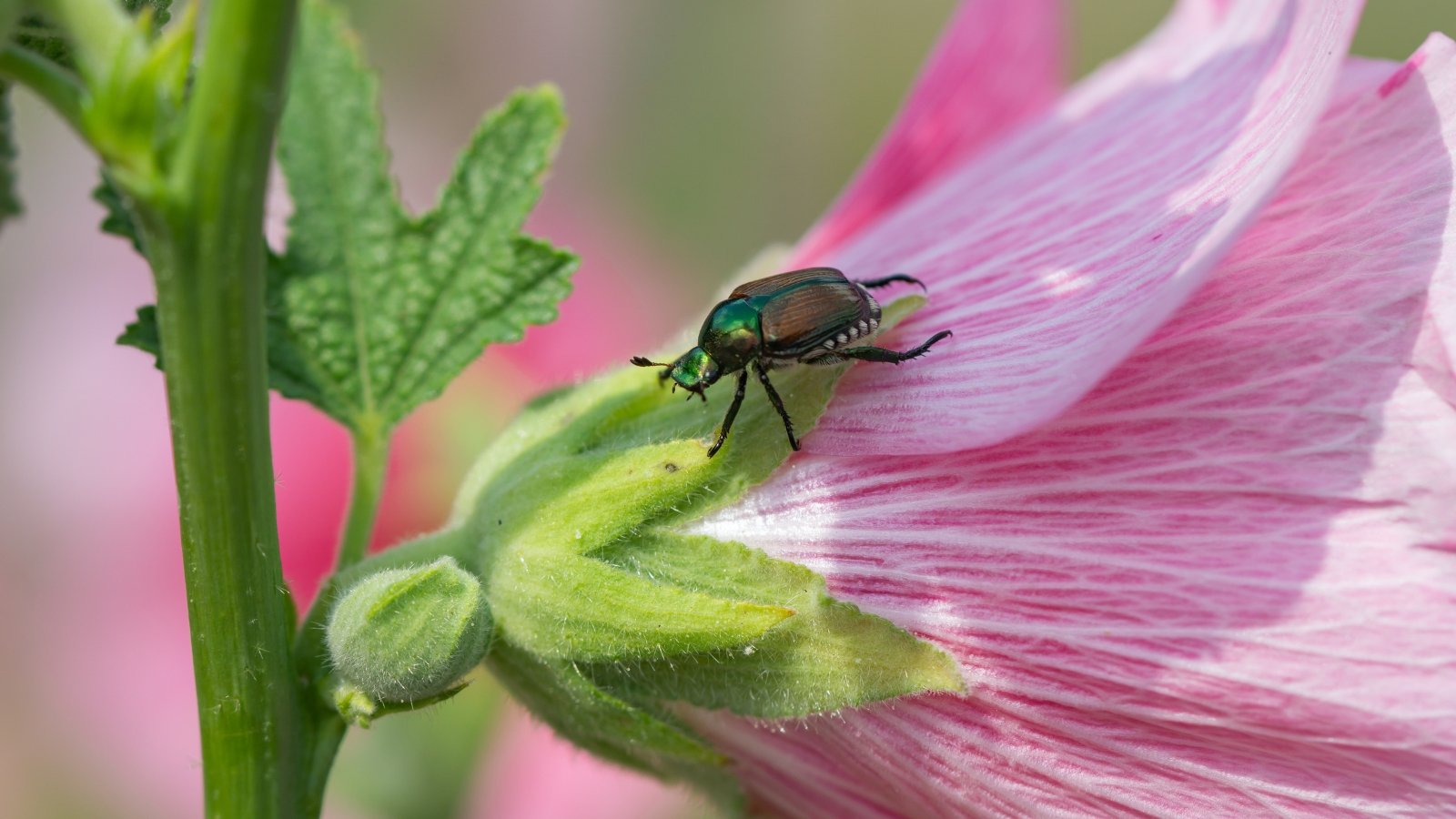

This invasive species is a matter for a few type of plant. Japanese beetles don’t discriminate so much throughout the yard. The adults feed on tons of of species of crops, consuming on fruit, flowers, and foliage. Their larvae, or grubs, select to chew on the roots of your grass, ruining that backyard you’ll have labored so laborious to handle.
Japanese beetles are native to Japan, the place they don’t pose a number of a menace. Launched within the USA throughout the early 1900s, they proliferated proper right here and are literally an issue for gardeners in every East Coast state in addition to Florida. They proceed to maneuver West by the 1000’s and 1000’s.
Grownup Japanese beetles are easy to find out. They’re large at as a lot as 1/2″ prolonged and have a metallic inexperienced head and bronze wings. They’ve a fuzzy abdomen beneath their wings with black and white markings. I consider they’re pretty, nevertheless I keep in Florida, so my opinion doesn’t rely proper right here.
Their larvae are normally not pretty. Rising from about 1/8″ to an inch prolonged, these cream-colored crawlers seem like your run-of-the-mill grub. They’ve a selected pattern on their underside. The grubs aren’t a difficulty for hollyhocks, nevertheless the adults are.
Beetles will trash the foliage of your crops, leaving them brown and chewed up. They feed on virtually every part of the plant, leaving your crops worse for placed on, and damaging pollinator homes and meals present.
One of many easiest methods to deal with Japanese beetles is prevention. Heading them off on the larval stage is possible. You’ll be able to do that by attracting birds to the yard which is ready to eat them. Stay away from watering your backyard between June and August, that’s the time beetles lay eggs throughout the soil, and they also need moisture to survive. Fewer eggs indicate fewer bugs.
Must you start to see these guys current up throughout the yard, you’ll select them off by hand and drop them in soapy water. This may occasionally sound morbid, nevertheless must you depart the ineffective beetles lying throughout the yard, this could help to discourage others.
Beetle traps work, nevertheless make sure you set them up away out of your favorite crops, on account of they do attraction to the bugs.
Use helpful nematodes (Heterorhabditis bacteriophora) to remove larvae. Apply two of these therapies two weeks apart in temperate fall or spring local weather. The nematodes will prey on any larvae that managed to make it by way of the summer time season. You’ll solely should deal with adults throughout the coming season.
Happily, Japanese beetles uncover positive scents to be repellant. No wish to make use of a pesticide. Companion plant some garlic collectively together with your hollyhocks as a deterrent or spray with a solution of cedar oil and water.
Sawfly
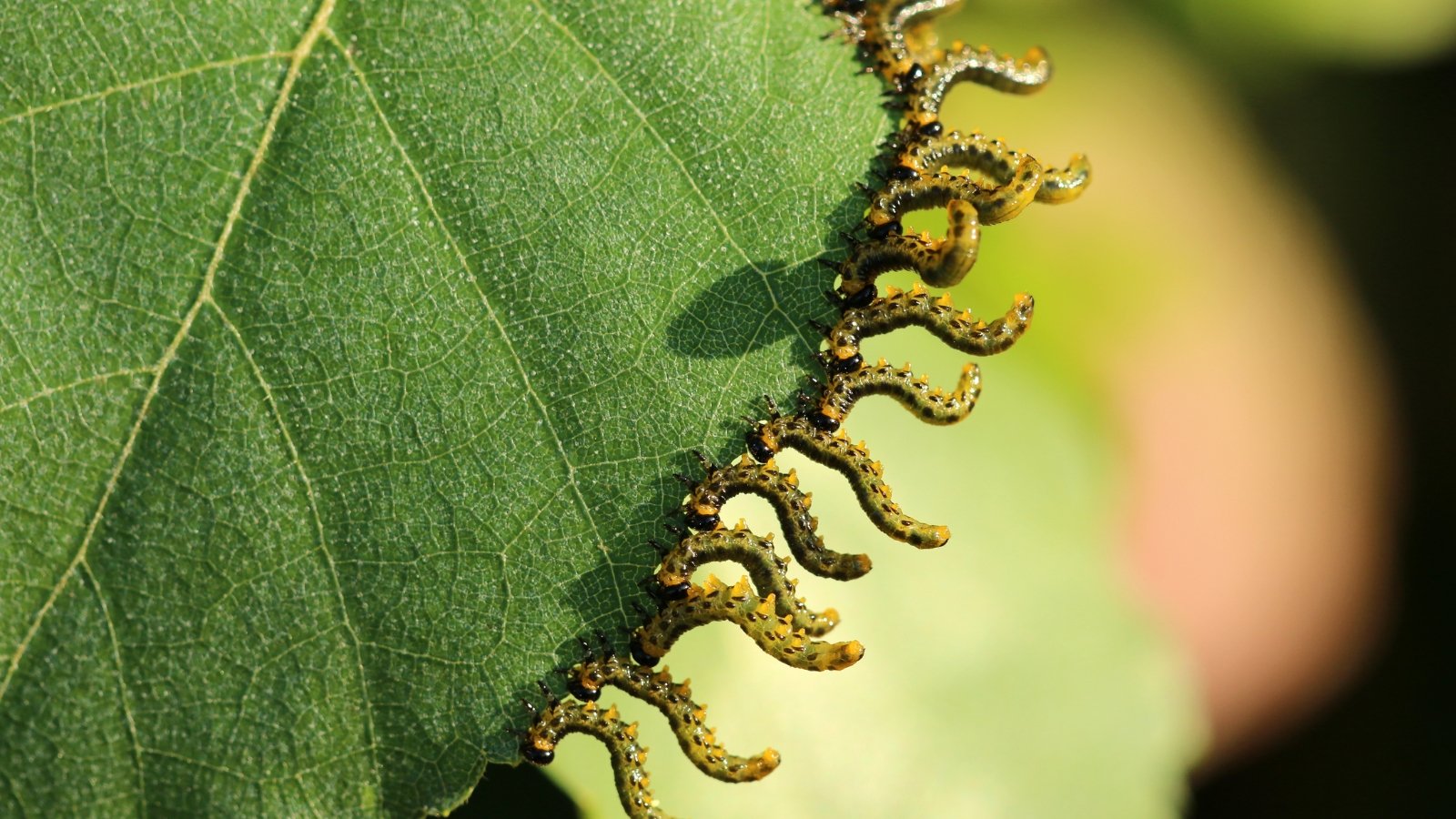

Elevate your hand must you’ve ever gone to battle in the direction of sawfly larvae! I do know merely how aggravating these pests will probably be and the way in which so much damage they’re going to do. Sometime, your leaves shall be healthful, inexperienced, and durable. The next, a brown, hole-covered mess.
Sawflies are widespread yard pests that use their saw-like ovipositor to cut into leaves the place they lay their eggs. Grownup sawflies aren’t a number of an issue to foliage, nevertheless their larvae are brutal. They’re going to skeletonize a leaf in a short time the least bit, they work in groups, and they also eat masses. The good news is that ought to you catch them, it’s easy to dispose of them. They don’t should be a dying sentence.
Sawfly larvae are easy to ID. You’ll see indicators of them immediately, as they skeletonize the leaves of your crops, seemingly in a single day. Must you uncover this happening to a plant, flip over a leaf that is solely half devoured. Small black and brown larvae seem like tiny caterpillars. They typically work in groups, defoliating one thing inside attain.
The perfect prevention for sawflies and their larvae are pure predators. Attraction to bugs like lacewings to the yard by planting quite a few nectar-rich flowers. The larvae of ladybugs and lacewings will knock out an infestation earlier than you’ll, and additional utterly.
Hand elimination is environment friendly for these pests. You can try selecting them off by hand, nevertheless I prefer to advocate pruning in its place. In case you see indicators of them on a plant, start making an attempt under leaves and decrease off any leaves the place you uncover them. Remove the leaves away from totally different crops. Chickens prefer to eat these pests.
It is also potential to mud your crops with diatomaceous earth or kaolin clay to dispose of and deter sawfly larvae. You’ll should reapply every in humid climates and after rain. I generally discourage utilizing pesticides ought to you possibly can help it, as these kill helpful bugs with the damaging ones. It will throw off the steadiness and depart you with even bigger factors. Nonetheless, neem and horticultural oils work.
Caterpillar


As regards to caterpillars, I undertake a “live-and-let-live” perspective. Nonetheless, it is potential you may uncover them very irritating, and technically, they’re an insect that eats hollyhocks, so we should at all times in any case decide them.
Hollyhocks are a host plant for the painted girl butterfly. They lay their eggs on the leaves, and as soon as they hatch, their larvae feed on them. It is necessary to make this dedication to your self. As an avid pollinator fanatic, I am ready to sacrifice foliage for butterflies. Nonetheless I understand that not everyone feels that method, so we’ll take care of them as pests, all of the an identical.
Painted girl butterflies are pretty little points. They are a small species with orange and black wings and white markings. Must you see them hanging spherical your crops, you’re susceptible to have some caterpillars hatching in barely under per week.
The caterpillars are small and gray with black markings and hairs that stand out in little spikes all through. As well as they’ve faint yellow striping that runs horizontally all through their our our bodies. They typically start on the perimeters of leaves and depart little behind nevertheless the central rib.
Prevention is troublesome. Butterflies are serious about nectar-rich flowers. You can on a regular basis take care of your full yard with systemic pesticides, nevertheless pollinators are the backbone of the flower yard. With out them, we don’t have virtually as many flowers. They obtained’t damage the flowers, solely the foliage and their presence means you’ll have additional crops throughout the coming years.
Ought to it is best to, hand elimination is the best method to eradicate caterpillars. They might look a little bit of intimidating with their spiky clumps of hair, nevertheless they’re completely harmless to the contact. Merely pluck them off and relocate them. Or, do away with them in your chosen methodology.
Scale
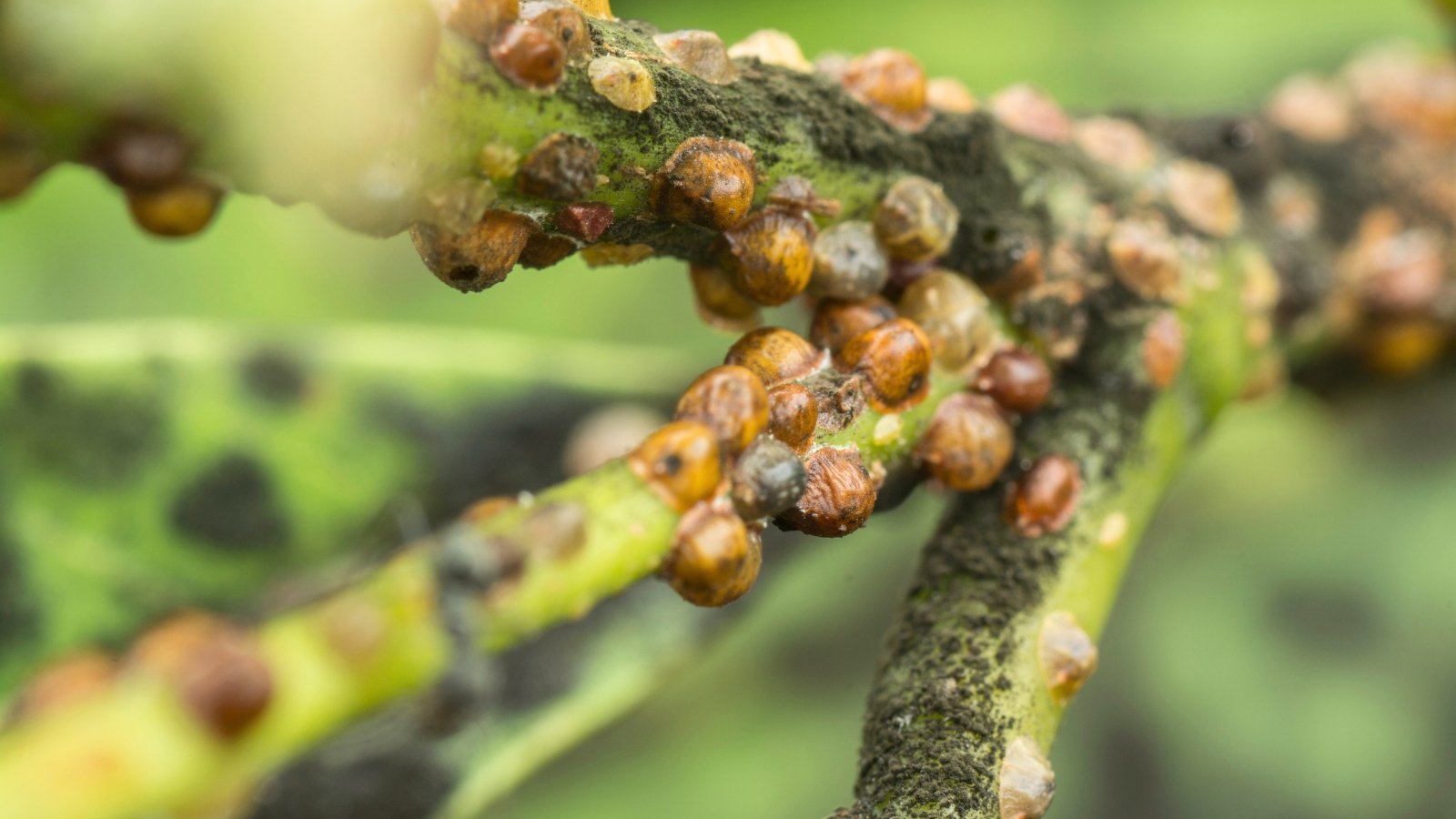

Scale bugs, nevertheless, haven’t any pretty butterfly stage. I’ve no affection for these uncommon little pests which can be usually proof towards typical methods. Scales are widespread yard pests that congregate on stems and under leaves, really wherever on the foliage. They pierce the membrane and suck out the sap, depleting the host of nutritional vitamins and moisture.
The severity of the damage relies upon upon the type of scale, and the way in which plentiful they’re. Some can kill a plant in a short while, whereas others couldn’t do any extreme damage. That’s not a chance I desire to take, so I dispose of them after I see them.
Some scales seem like tiny, gelatinous blobs affixed to leaves. You most likely obtained’t see them transferring spherical so much, on account of as quickly as they latch on they spend most of their time feeding. They generally tend to cluster up in groups, which makes them easier to find out. They’re typically brown, yellow, tan, or white.
One of many easiest methods to forestall these bugs is to observe good hygiene. Clear up throughout the bottom of your beds and recurrently study for indicators of pests. A sticky excrement known as honeydew is commonly leftover on the leaves and stems these guys munch on. Black sooty mildew can develop on this honeydew, inhibiting photosynthesis and extra harming the plant.
Attraction to helpful bugs to the yard with a great deal of nectar sources. These predators do the simplest job of preserving your yard pest populations down with out harsh chemical substances. Lastly, preserve your crops strong. This trend they’ve a higher likelihood of withstanding the damage until you eradicate the scales.
Making use of broad-spectrum pesticides is not a hottest methodology with these or any pests. The reason is that moreover they kill the populations of helpful bugs. Then you have no pure security from the nuisance bugs.
If the infestation is small and localized, a Q-tip soaked in alcohol is an efficient machine for elimination. Merely use the cotton swab to wipe them off. If the infestation is additional extreme, neem oil and horticultural oils are reliable therapies. Horticultural oil is best utilized in late winter, whereas the scales are dormant. That’s when the crawlers, or youthful scales, are energetic and easy to kill.
Spider Mite
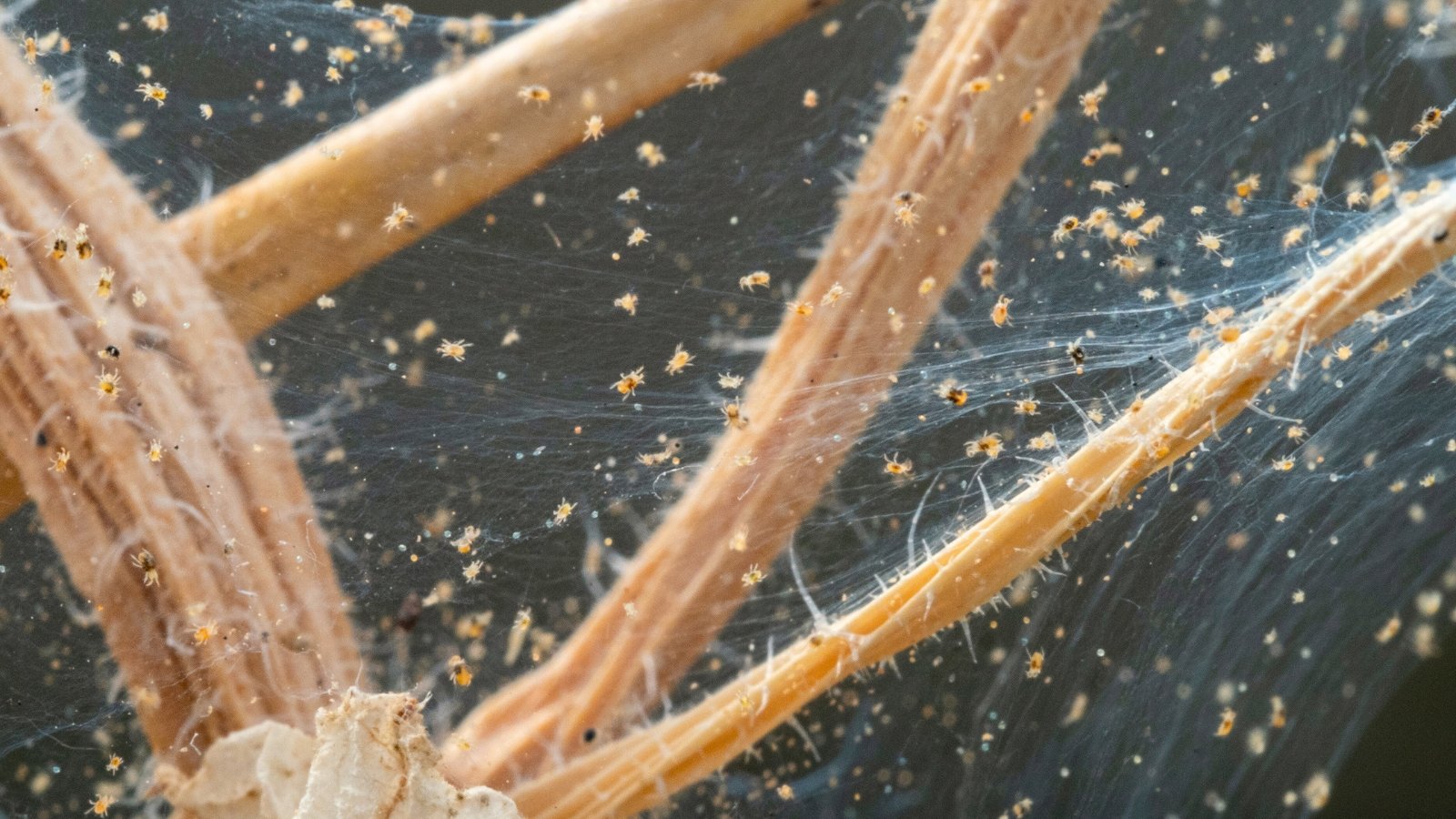

I don’t desire a spider mite infestation on any gardener. These pests will probably be notably troublesome on houseplants as a result of dearth of predators throughout the residence. They’ve a great deal of pure predators throughout the yard, in order that they don’t take over within the an identical method, nevertheless they’re nonetheless a nuisance.
Spider mites set off comparable factors to scales. They pierce the membranes of the leaves and suck out the sap, damaging whole effectively being. They’re so tiny, that they usually go unnoticed until the damage turns into obvious. A small infestation is unlikely to harm a mature hollyhock, nevertheless an enormous infestation can.
On account of spider mites are so small, they’re troublesome to detect on their very personal. Fortunately, they assemble advantageous webbing under leaves and in numerous sheltered areas on the crops they infest. Look throughout the junctures between leaves and stems, and totally different areas that might provide shelter. Must you see this webbing, you seemingly have spider mites.
In terms of what they do to their prey, leaves might flip bronze on prime. Small white or yellow dots might pop up on the foliage. Positive crops might have distorted foliage, notably new leaves. Leaves will drop in late phases.
Good hygiene is crucial in stopping spider mites. Preserve your beds cleaned up and tidy. Spider mites don’t like humidity, in order that they’re primarily an issue throughout the dry months. Preserve your crops watered accurately, as water-stressed crops are additional weak to interrupt.
Spider mites typically is an issue to dispose of as quickly as they arrange a inhabitants on a plant. Misting them with rubbing alcohol is a reliable technique to kill them. Cinnamon, mint, neem oil work too. and Doing this could usually dry out your hollyhocks though, so don’t depart the alcohol on for prolonged.
A strong spray of water will knock down the inhabitants of mites, nevertheless not altogether. Miticides are a higher alternative than totally different pesticides, as spider mites can quickly flip into proof towards them.
Mealybug
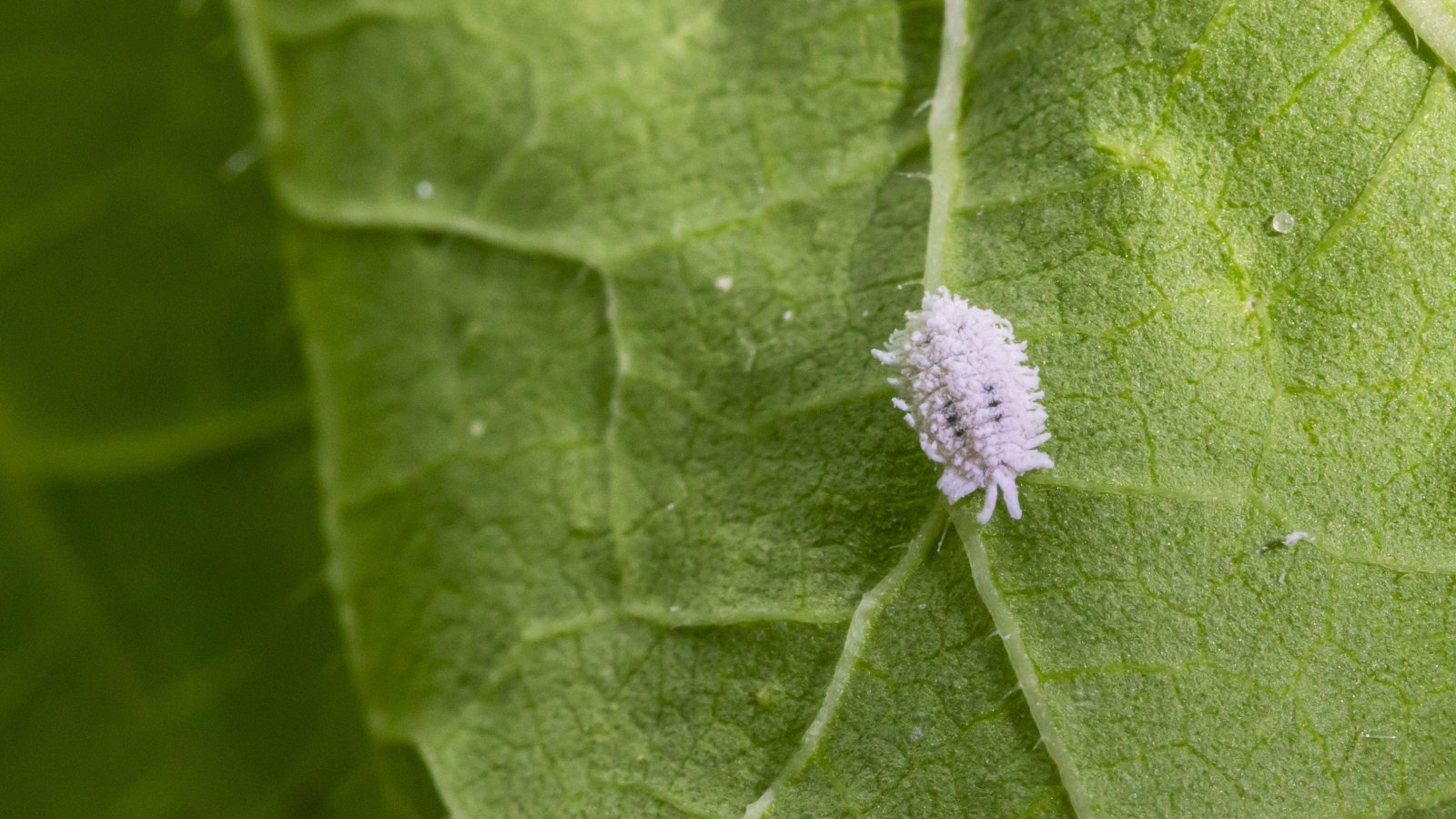

Mealybugs are little white, sap-sucking pests with a fuzzy look. The fuzz is unquestionably a waxy coating, which makes these bugs additional proof towards pesticides. As one different species of scale, they’ve very comparable habits. They congregate on foliage and depart behind a sticky mess, draining the host of nutritional vitamins. These are a menace to the final effectively being of the plant and may need to be handled to take care of it alive.
Mealybugs are easy to see and decide, and onerous to dispose of. They’re small, rectangular bugs that appear to have a fuzzy coating of hair, nevertheless in actuality, they are not. That’s their waxy defensive coating. You will discover them in groups alongside stems or under leaves. As well as they generally tend to cowl in leaf junctures. You’ll uncover cottony loads of eggs on the plant as correctly.
Fortunately, mealybugs have a number of pure predators. Attracting these predatory bugs to the yard will go a good way in the direction of stopping an infestation. In fact, I’ve dealt with these guys on a houseplant sooner than, and simply setting the plant open air for a few days took care of the state of affairs.
Always study new crops that you simply simply introduce to your yard. Simply bear in mind to’re not inadvertently introducing pests along with them. Preserve your hollyhocks well-maintained they usually’ll stand up increased to an infestation.
Insecticidal soaps are increased at breaking down the waxy coating than systemic pesticides. Neem oil is one different good remedy for mealybugs. As with some scales, a cotton ball soaked in alcohol might even kill them as you wipe them away.
Key Takeaways
Good hygiene throughout the yard is the best method to forestall pests from attacking your hollyhocks. Preserve the areas beneath your crops tidy, and study any new crops for indicators of infestation. Hollyhocks are enticing biennials that may flower fantastically with the right care. They’re correctly effectively definitely worth the effort in preserving them pest-free.
[ad_2]
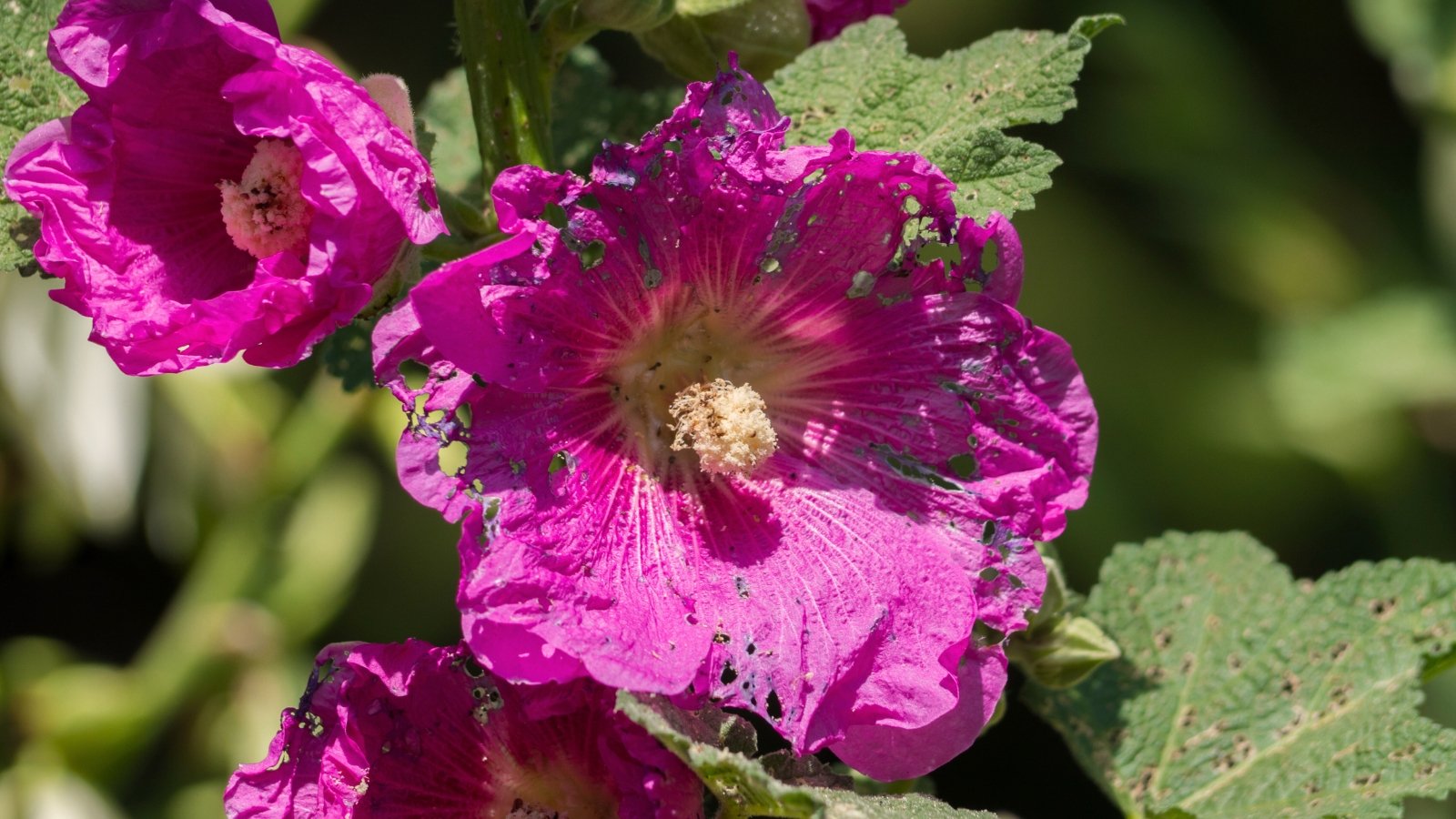

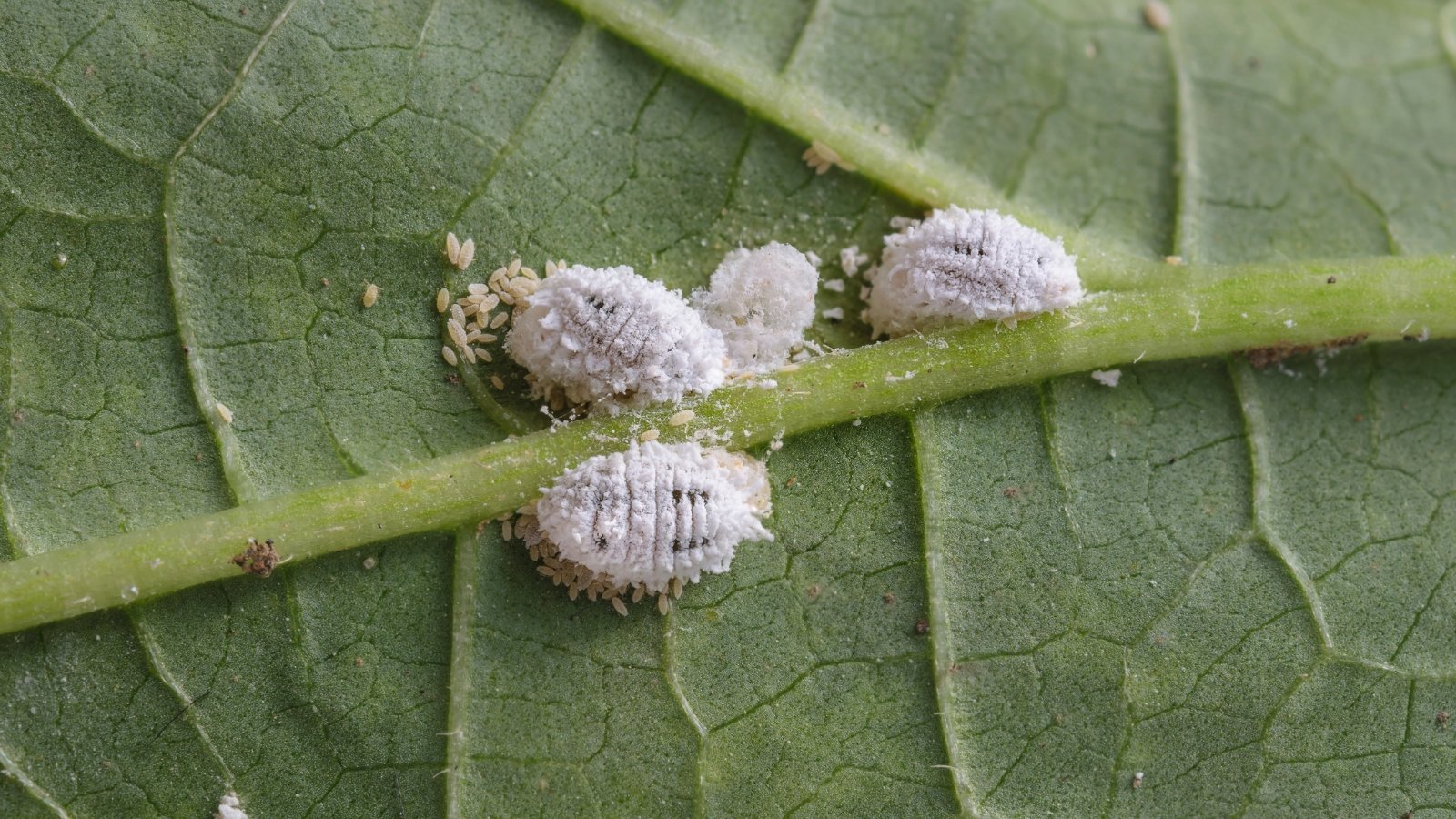
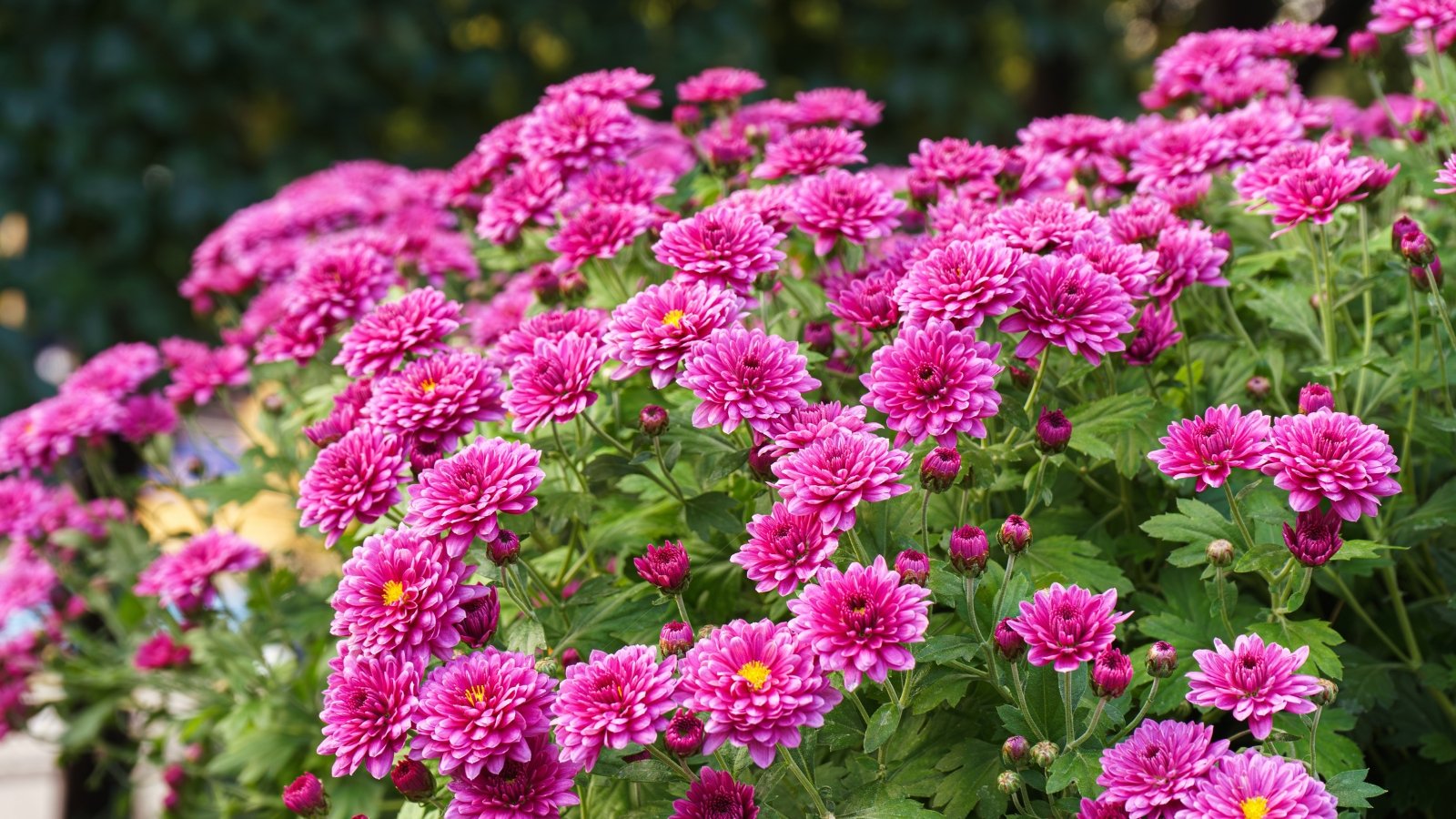
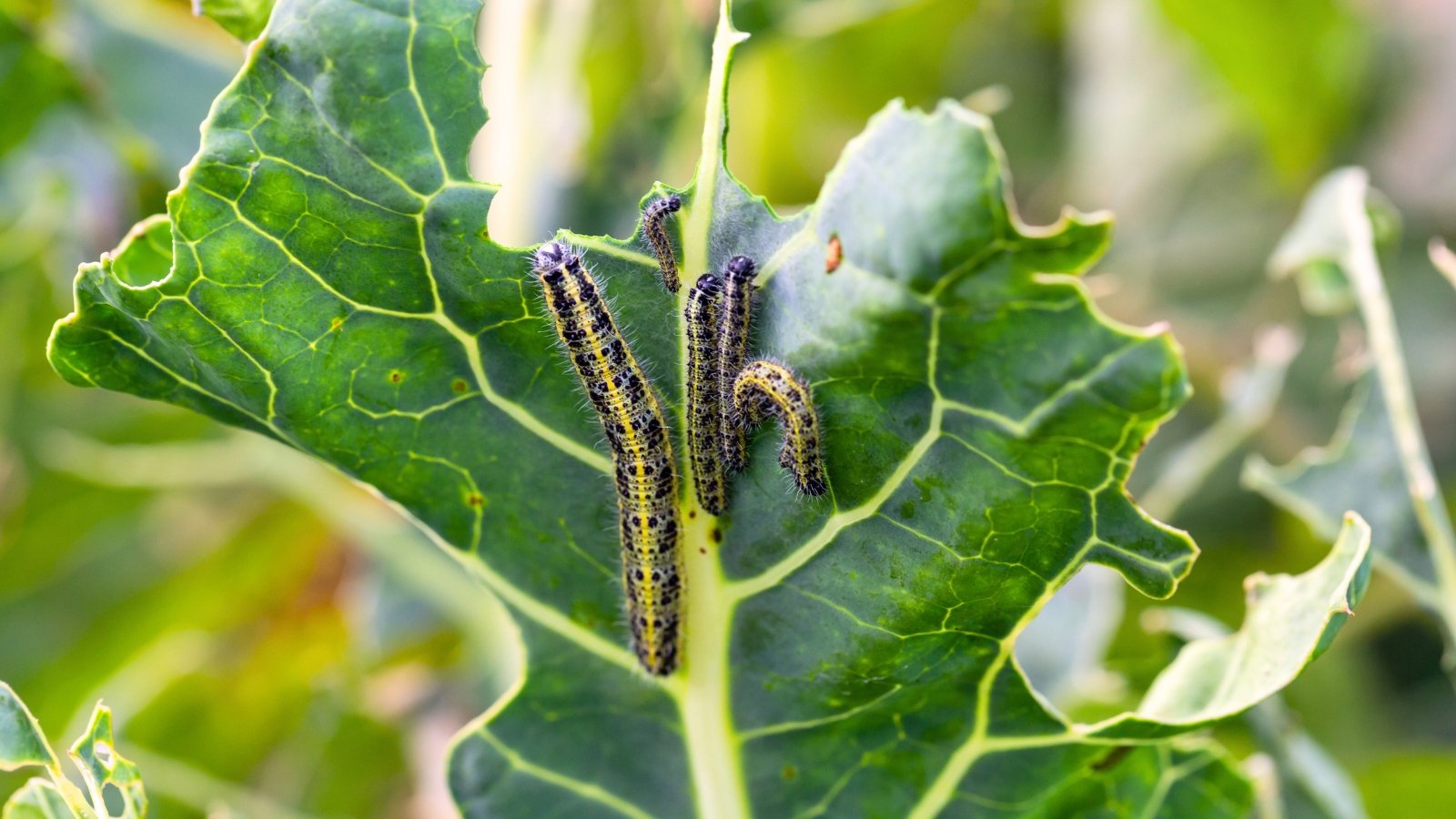
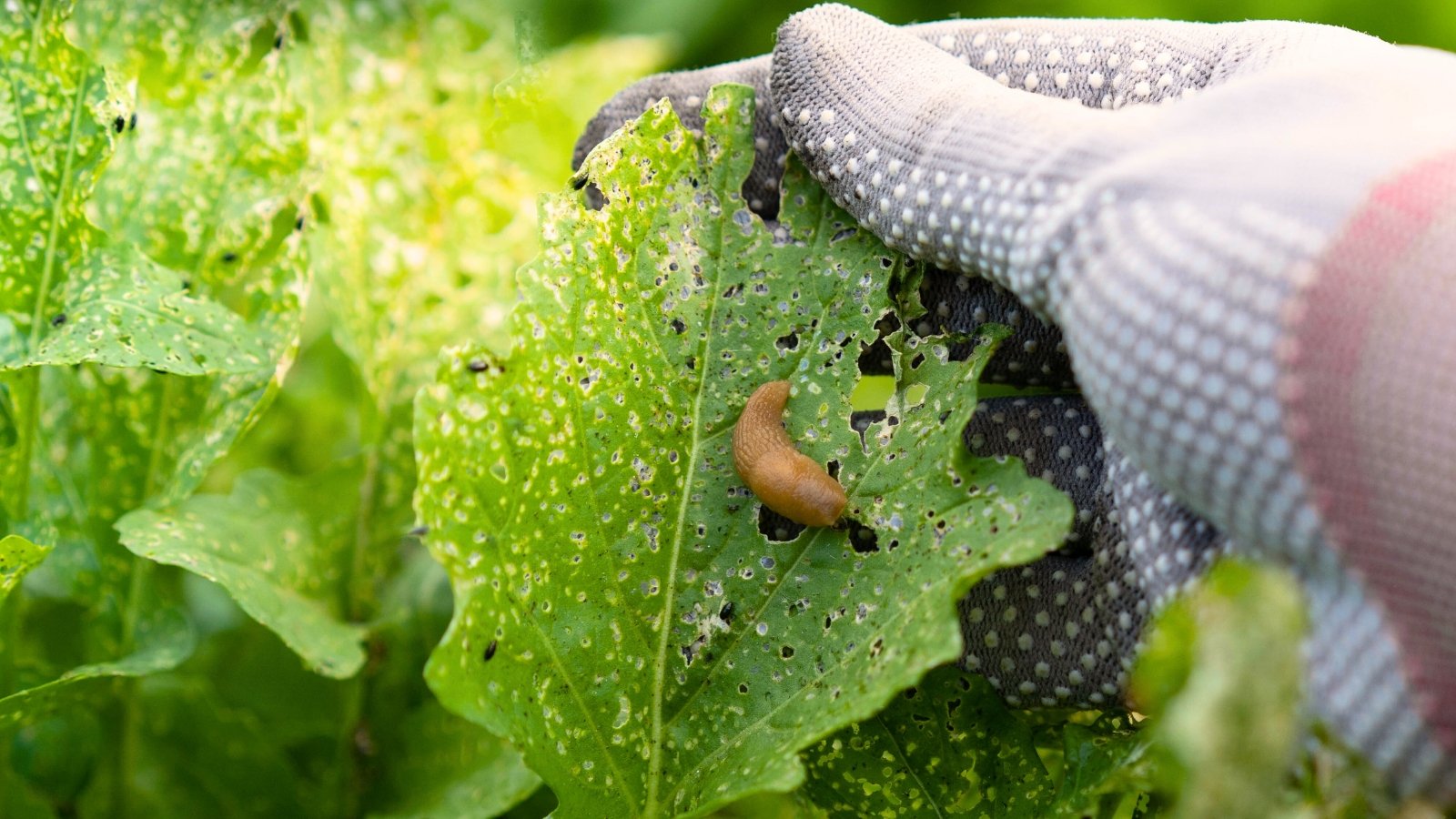
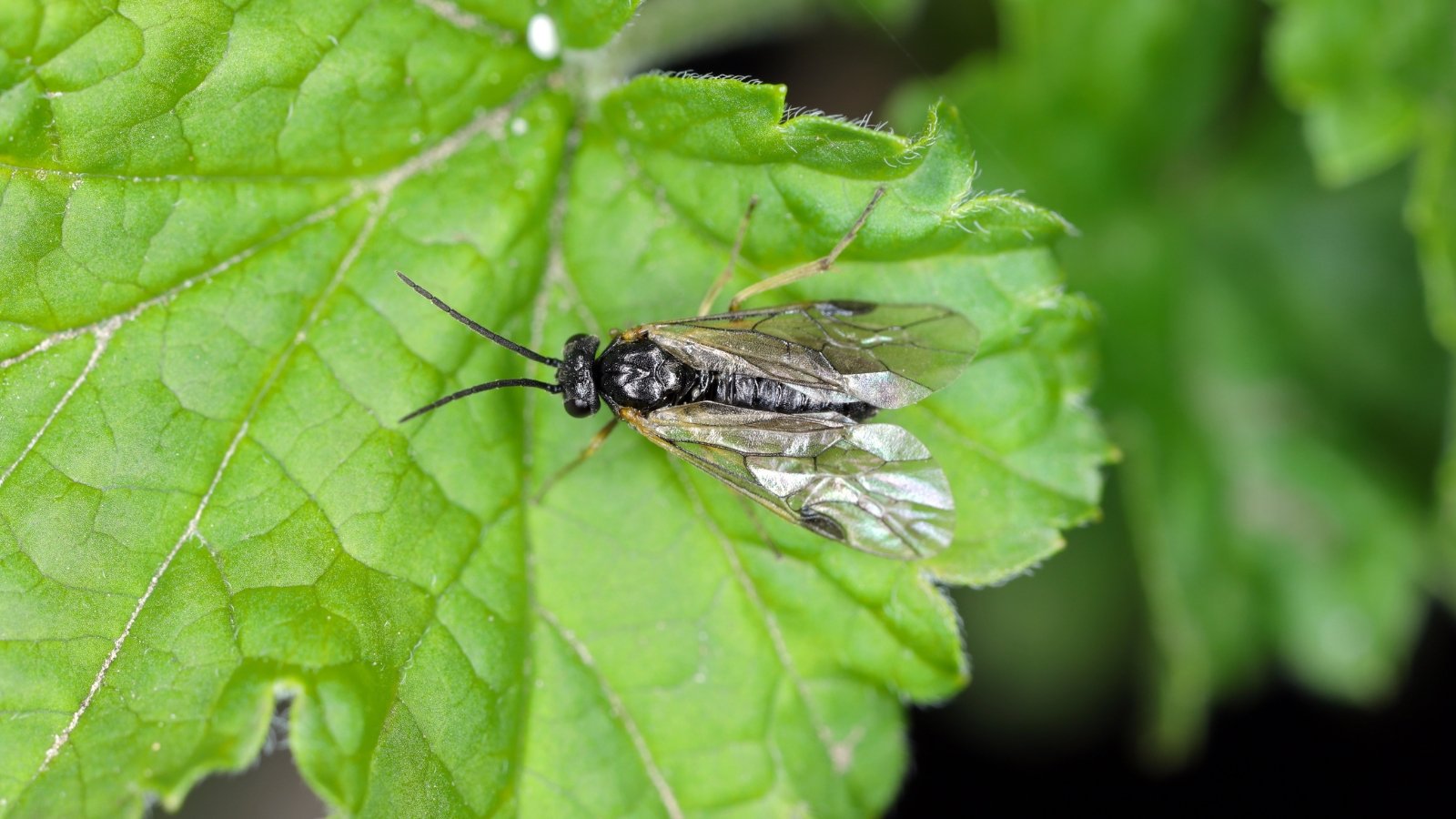

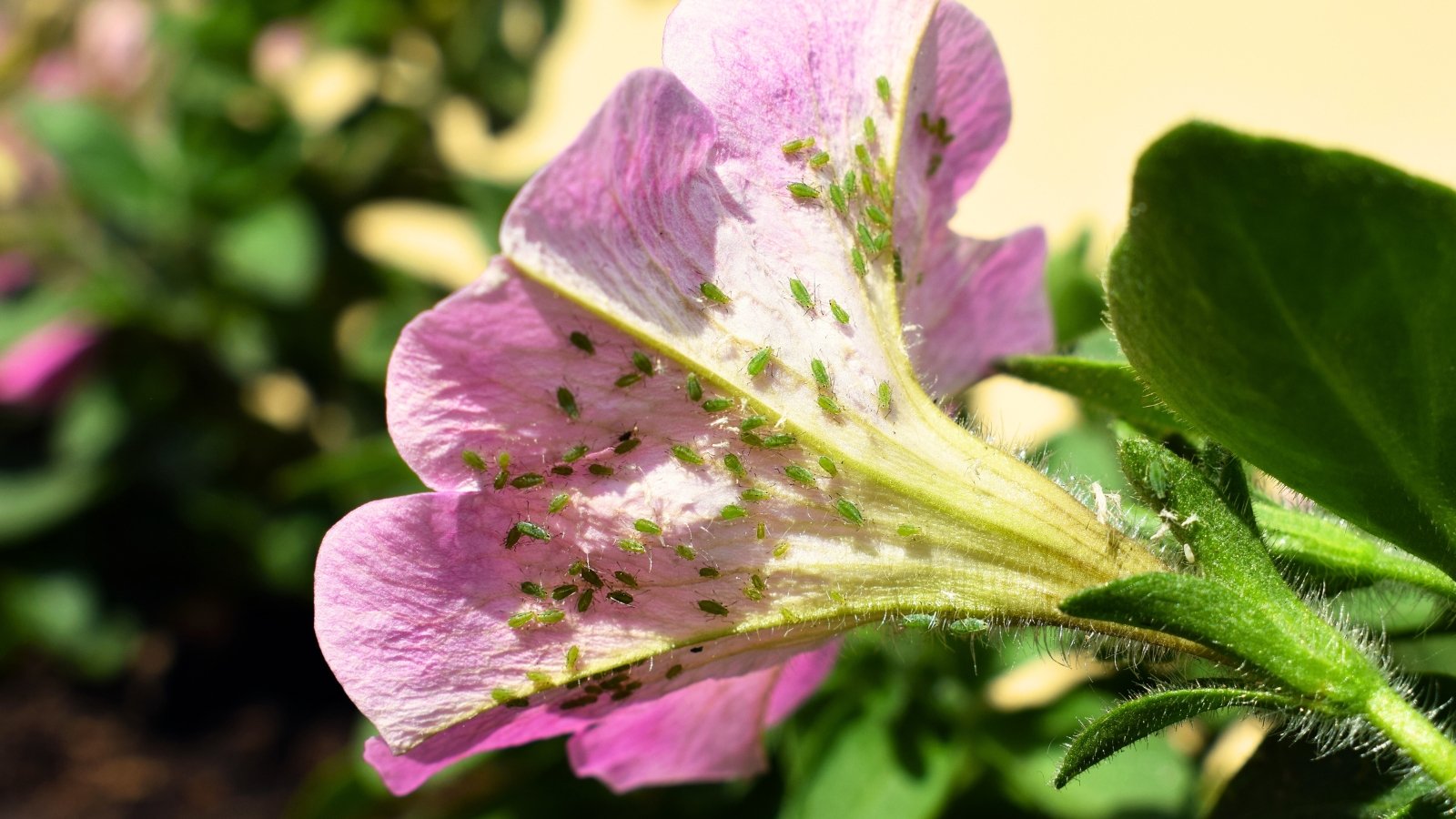

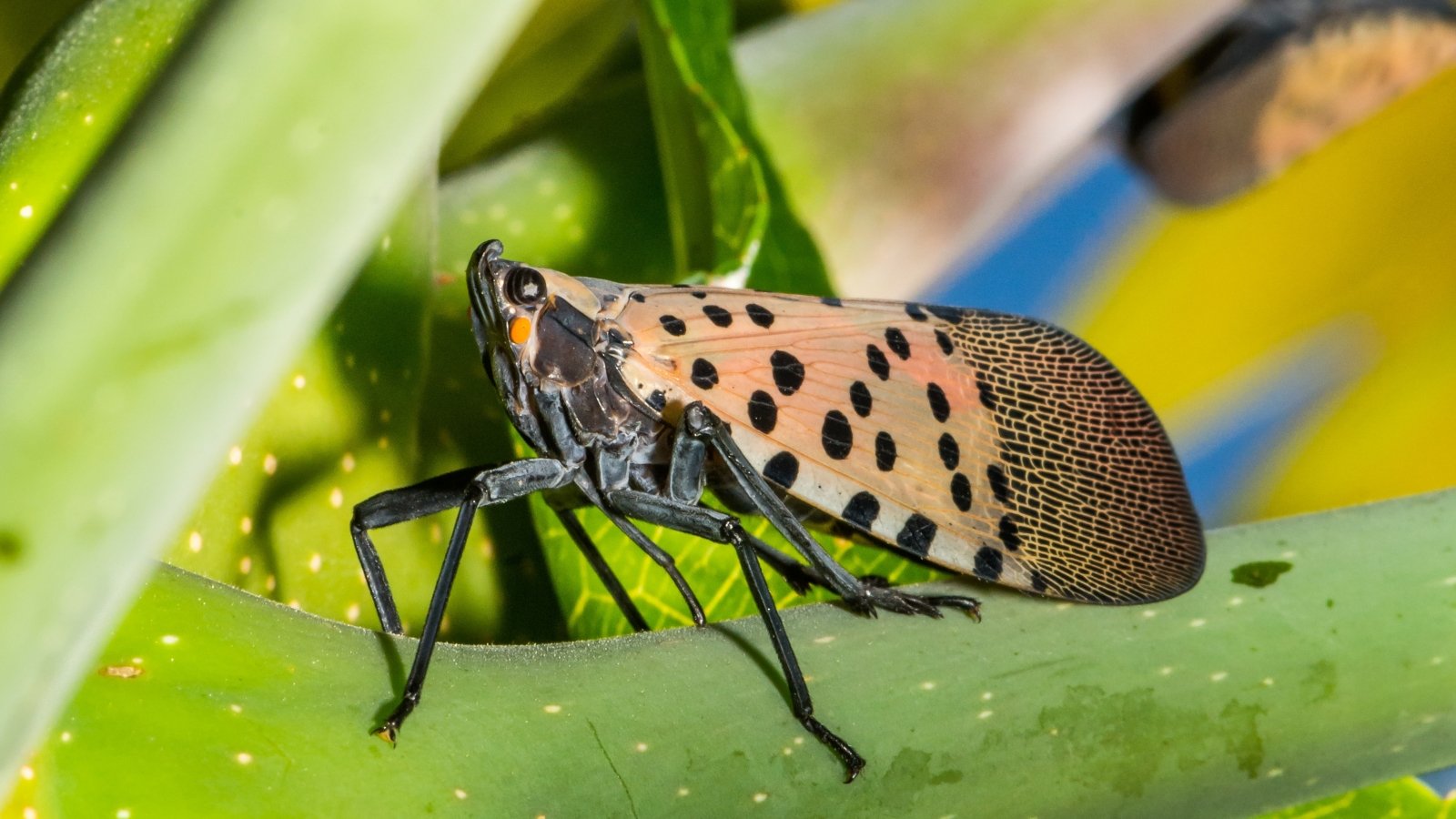
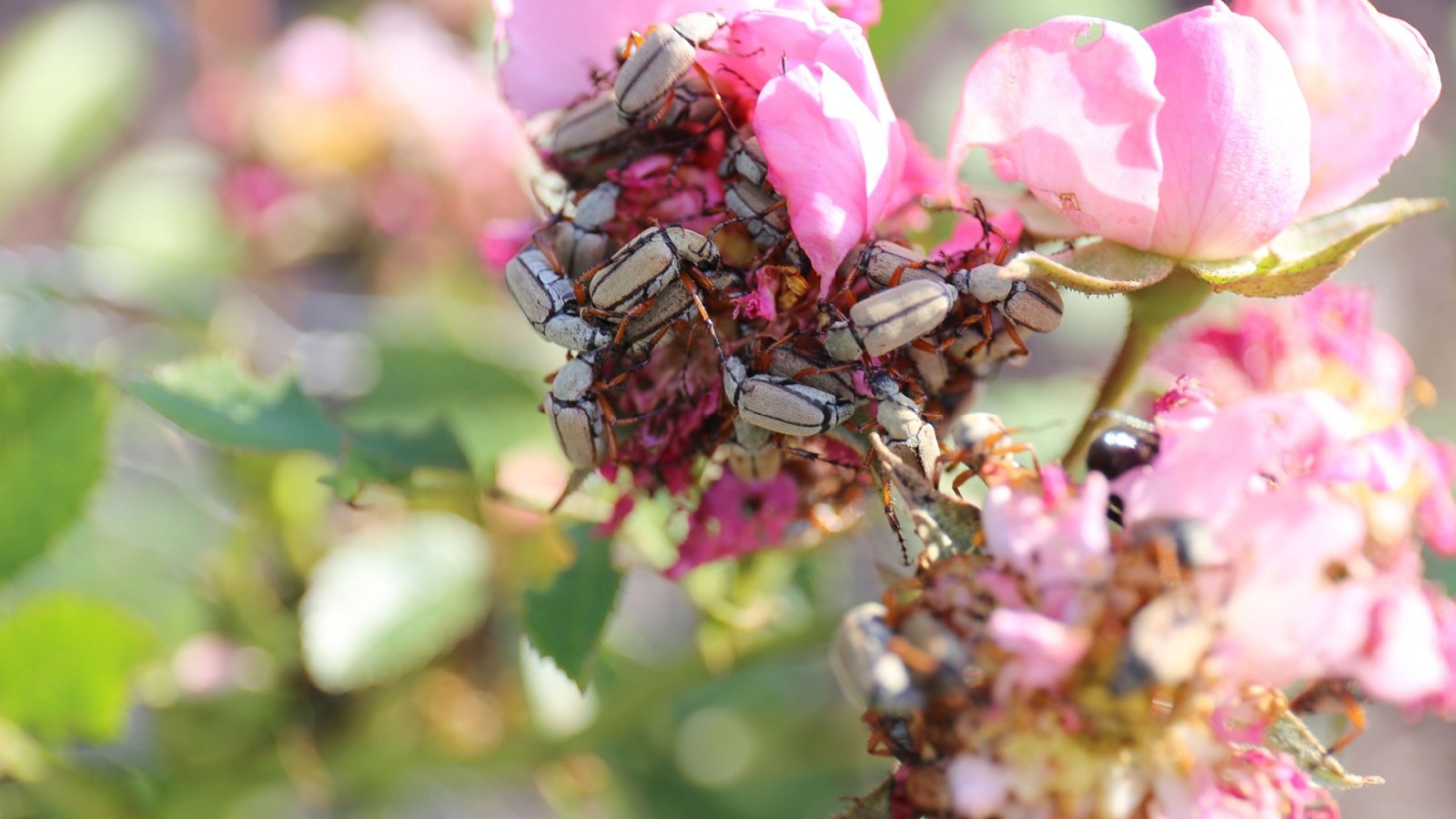
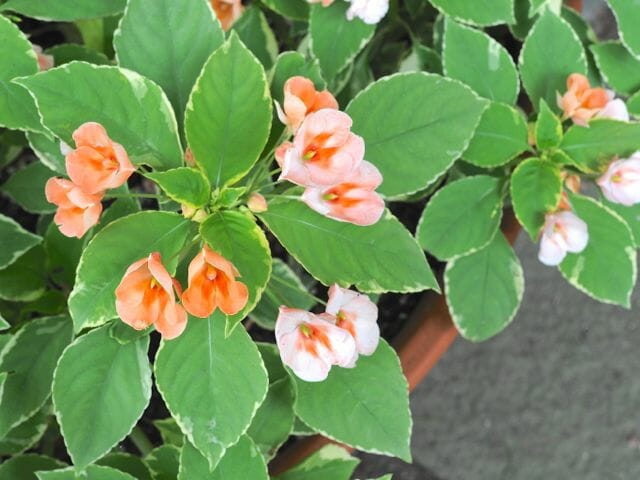
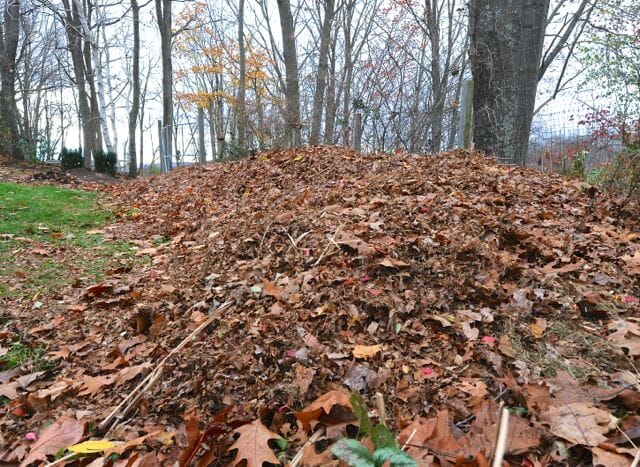

SunnyDaze
This article offers a thorough overview of common pests that affect hollyhocks. It’s helpful to know about prevention methods, especially for someone like me who is still learning about gardening and the challenges that come with it.